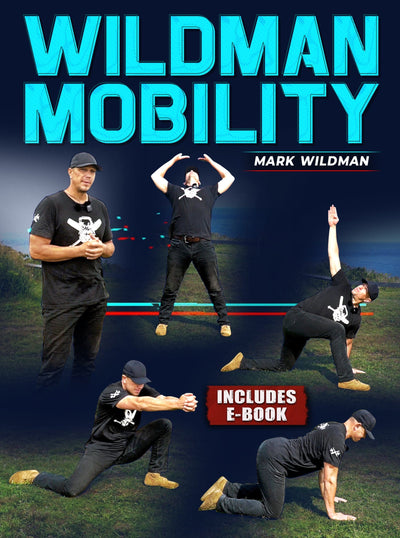What Do Kettlebell Swings Work?
So, what do kettlebell swings work?Kettlebell swings are a highly effective exercise that engages and works several key muscle groups in the body. The primary target of kettlebell swings is the posterior chain—a group of muscles on the backside of the body. This includes the hamstrings, glutes, and erector spinae (lower back muscles). The explosive hip thrust generated during the swing activates these muscles, helping to develop strength, power, and stability in the lower body.
What this article covers:
- Kettlebell Swings
- Benefits of Kettlebell Swings
- Kettlebell Swing Form
- How to Do Kettlebell Swings
- Alternative to Kettlebell Swings
Additionally, kettlebell swings work the core muscles, including the rectus abdominis, obliques, and transverse abdominis. These muscles are essential for maintaining proper posture and stability throughout the movement. The rapid acceleration and deceleration of the kettlebell require the core muscles to engage to prevent overextension of the spine and maintain a strong, stable torso.
The deltoids (shoulder muscles) and trapezius (upper back muscles) also play a role in stabilizing the shoulders and upper body during the swing. While the arms should not be the primary movers in this exercise, they do assist in controlling the kettlebell's trajectory.
Furthermore, kettlebell swings contribute to cardiovascular endurance. The explosive nature of the movement elevates the heart rate, making it a great cardiovascular exercise. This aspect of kettlebell swings can improve overall fitness and help with fat loss.
Incorporating proper hip hinge mechanics is fundamental to performing kettlebell swings effectively. This movement pattern not only targets the intended muscle groups but also helps in developing proper lifting mechanics and body awareness.
Kettlebell Swings
Kettlebell Swings are a dynamic and full-body exercise that involves swinging a kettlebell between the legs and then using the hip thrust to propel it forward. This movement engages a variety of muscle groups, primarily targeting the posterior chain, which includes the hamstrings, glutes, lower back, and core muscles. The exercise is renowned for its ability to build strength, improve cardiovascular fitness, and enhance explosive power.
Benefits of Kettlebell Swings
Benefits of Kettlebell swings are plenty. This makes them a popular choice among fitness enthusiasts. They efficiently work multiple muscle groups, making them an excellent compound movement for building functional strength. The rapid hip thrust and explosive nature of the exercise also contribute to cardiovascular endurance and calorie burning, making them a time-efficient option for fat loss. Moreover, kettlebell swings engage the core muscles to stabilize the body during the movement, leading to improved core strength and stability. The exercise's versatility allows it to be incorporated into various workout routines, from strength training to high-intensity interval training (HIIT).
Kettlebell Swing Form
Proper kettlebell swing form is crucial to maximize the benefits and prevent injuries. Begin by standing with your feet shoulder-width apart and the kettlebell placed a few feet in front of you. Hinge at the hips, maintaining a flat back, and grip the kettlebell's handle with both hands. Initiate the swing by driving your hips forward forcefully, using the power generated by your glutes and hamstrings. As the kettlebell reaches chest height, allow it to swing back down between your legs while maintaining a neutral spine. The motion is fluid and should resemble the shape of a pendulum. Avoid using your arms to lift the kettlebell; the power should come from your lower body.
How to Do Kettlebell Swings
Here is how to do kettlebell swings. Stand with feet shoulder-width apart, kettlebell a short distance in front of you. Hinge at the hips, grasp the kettlebell handle with both hands, and maintain a flat back. Engage your core, and with a slight bend in the knees, prepare for the swing.
Drive your hips forward explosively, swinging the kettlebell up to chest height.
Let the kettlebell swing back down between your legs, keeping your back straight.
Maintain a fluid motion, using the hip thrust to power the swing.
Alternative to Kettlebell Swings
If you're looking for an alternative to kettlebell swings, dumbbell swings can be a viable option. Dumbbell swings mimic the movement of kettlebell swings but use dumbbells instead. This alternative can be beneficial if kettlebells are unavailable or if you prefer using dumbbells. Additionally, Romanian deadlifts are an effective exercise for targeting the posterior chain and can serve as a substitute if you're looking for variety. Remember to maintain proper form and gradually increase weights to avoid injury.
Incorporating kettlebell swings into your fitness routine can offer a multitude of benefits, enhancing strength, endurance, and overall functional fitness. As with any exercise, it's important to start with an appropriate weight, focus on proper form, and gradually increase intensity to ensure safety and optimal results.
Overall, kettlebell swings are a powerful compound exercise that engages multiple muscle groups simultaneously, making them a versatile addition to strength training and conditioning routines.
Did you find the blog helpful? If so, consider checking out other guides:
- 100 Kettlebell Swings a Day
- Kettlebell Swings with a Dumbbell
- 10,000 Kettlebell Swing Challenge
- How Many Kettlebell Swings
- 300 Kettlebell Swings a Day
- 50 Kettlebell Swings a Day
- 200 Kettlebell Swings a Day
- Kettlebell High Pull
- Kettlebell Pullover
- Kettlebell Pull Exercises
- Kettlebell High Pull Muscles Worked
- Pull Throughs and Kettlebell Swings
- The Kettlebell Plank Pull Through
- Overhead Squat with Kettlebells
- Double Kettlebell Squat





